Over the weekend, temperatures topped 100 degrees in Southern California (just as they did in several locations around the world), causing problems for the electric distribution system, which resulted in power outages for tens of thousands of people. The area’s utility companies did not blame generation as the cause of the blackouts. Joseph Ramallo, a spokesman for the Los Angeles Department of Water and Power, said there were more than 700 individual incidents in their system such as damaged underground cables, overhead wires, and transformers.
However, employees and spokespeople from another utility with an anti-renewable energy agenda, Arizona Public Service (APS), were quick to inaccurately claim that California’s renewable energy policies caused the power outages.
Michael Shellenberger, Founder and President of the pro-nuclear Environmental Progress and an aggressive nuclear energy advocate and renewables critic, was one of the first to blame the Los Angeles outages on an over-reliance on renewable energy, initially saying that nuclear power could have prevented the blackouts. He later deleted his tweet and apologized for the error.
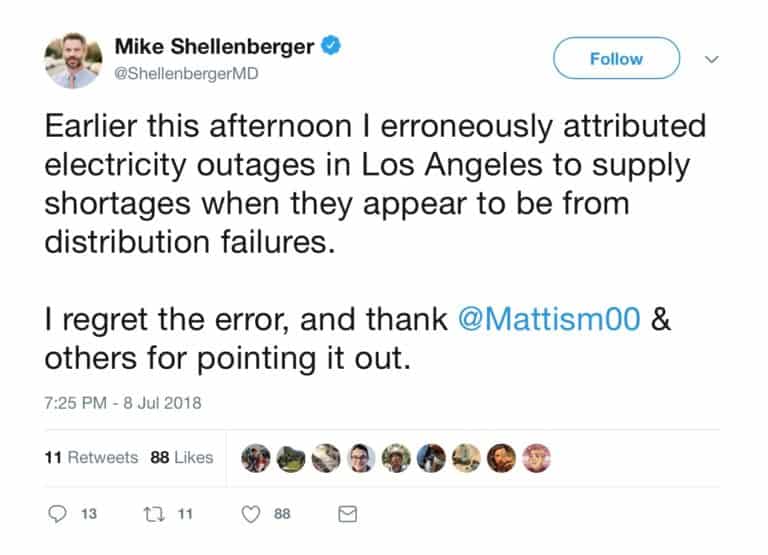
That didn’t stop a number of APS employees and consultants from repeating Shellenberger’s inaccurate attribution of California’s power outages to energy policy.
APS spokesperson Hal Pittman peddled Shellenberger’s tweet as a way of attacking a ballot measure that would require APS to generate 50 percent of its electricity from renewable sources by 2030. He did not amend the claim after Shellenberger deleted his tweet and apologized.
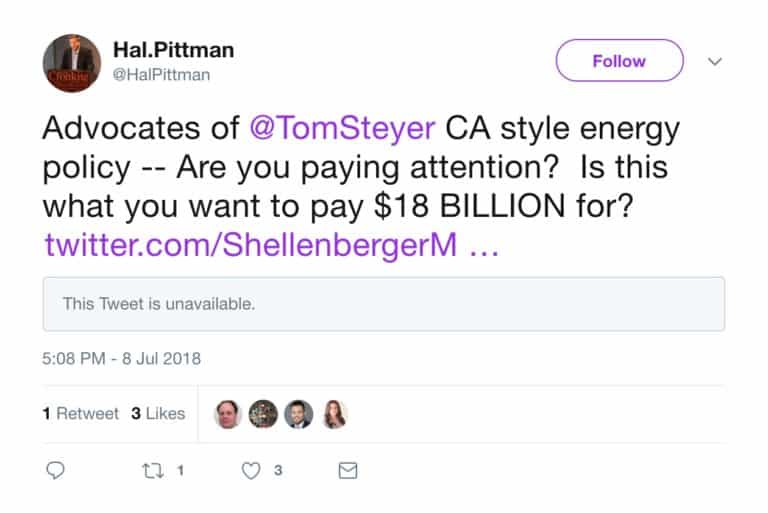
Alana Chavez Langdon, an APS community affairs representative did the same.
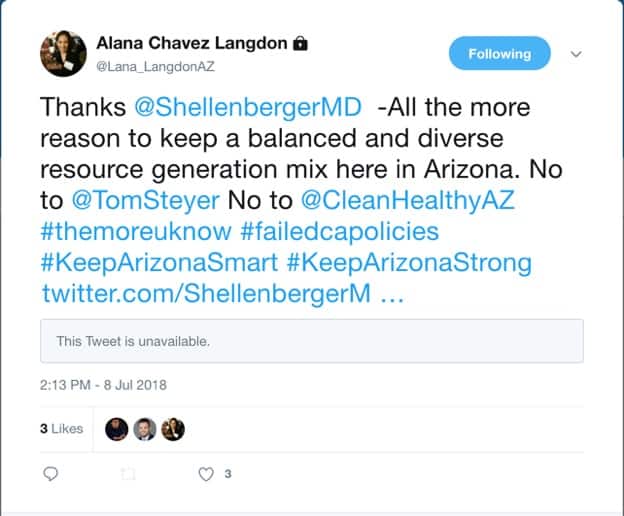
Jessica Pacheco, APS’ vice president for state & local affairs, retweeted false claims several times throughout the weekend from Brian Carpenter, an outage manager from APS, and from Kory Raftery, an APS communications team leader.
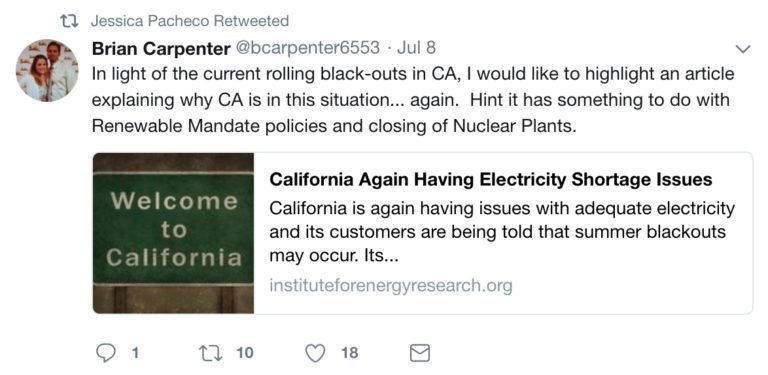

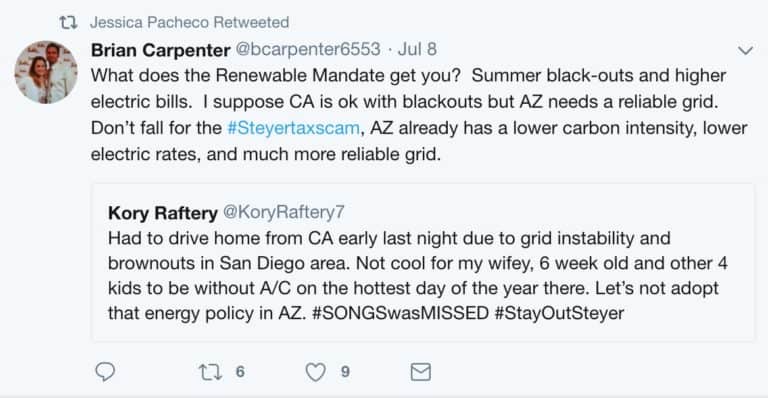
Matt Benson, an employee at Veridus, a PR and lobbying firm that has led APS’ campaign against the clean energy ballot initiative throughout 2018, and spokesperson for Arizonans for Sustainable Energy Policy and Arizonans for Affordable Electricity (campaigns funded by APS parent company Pinnacle West to oppose the clean energy proposal) also falsely implied renewables on California’s grid caused the power outages.
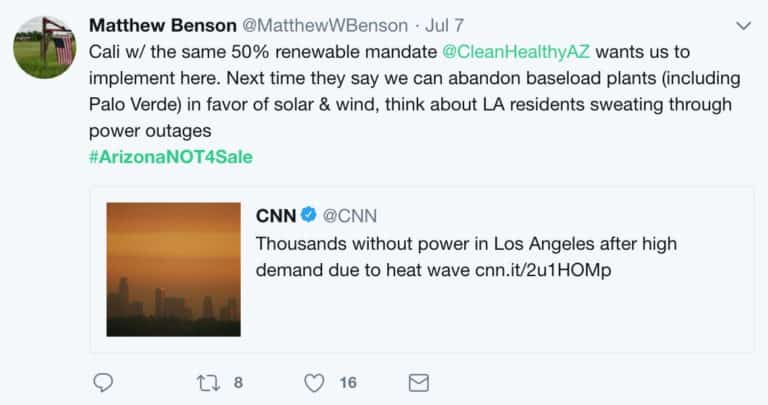
Janet Dean, Northeast Arizona Community Affairs Manager for APS, retweeted Pittman’s claims with her own comment.
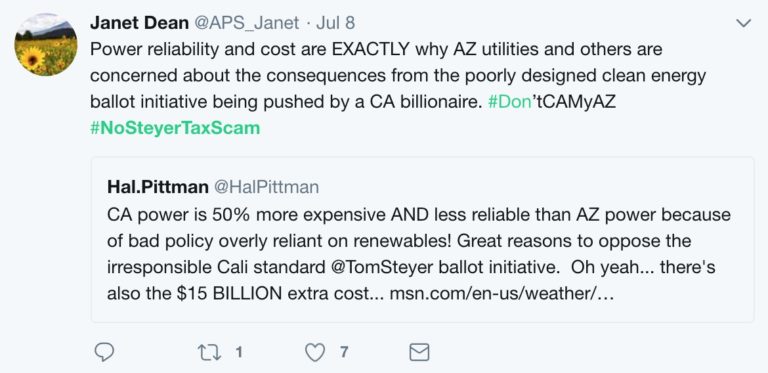
Bob Bement, the Chief Nuclear Officer at Palo Verde, supported the same claim that California’s power outages were a result of poor energy policy.
Data shows distribution grid, not generation, responsible for vast majority of outages
Studies show that the vast majority of power disruptions have nothing to do with what kind of sources generate electricity, but with the wires and poles that compose the distribution grid that carries it to us. As few as 0.00007% of all major power disruptions nationwide from 2012-2017 were due to fuel supply, according to a Rhodium Group study using Department of Energy data.
APS has taken its cues from Shellenberger before. He claimed in April that the 50% renewable energy ballot amendment would force an early retirement of the nuclear power plant Palo Verde and cause an increase in natural gas consumption, driving up carbon emissions. Days later, APS began to push his claim.
In response, NRDC released a report that included power sector modeling conducted by ICF and concluded, “Arizona’s Palo Verde nuclear power plant stays open and operates around-the-clock, even as utilities build enough renewable energy capacity, like wind and solar farms, to meet a 50 percent by 2030 renewable portfolio standard.”
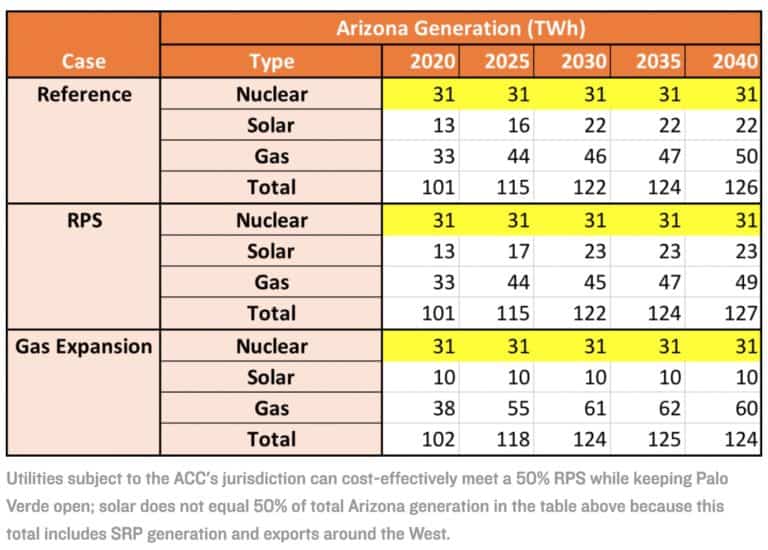
Source: Natural Resources Defense Council. “Note that the nuclear generation is the same in all three cases.”
The false claims by APS come at a pivotal crossroads for Arizona’s energy future. Last week, Clean Energy for a Healthy Arizona submitted over 480,000 signatures to put a 50% renewable energy by 2030 mandate on the ballot this November. Arizona Corporation Commissioner Andy Tobin also released his proposed rules for his Energy Modernization Plan, which calls for 80% clean energy by 2050 and includes nuclear as part of the mix.
Since the ballot initiative was introduced earlier this year, voters have witnessed the monopoly utility contribute to anti-renewable groups, craft legislation to undermine the ballot, briefly create their own ballot initiative to confuse voters, and offer up to $7,500 to signature gatherers for the Clean Energy for a Healthy Arizona campaign if they would quit collecting signatures.

